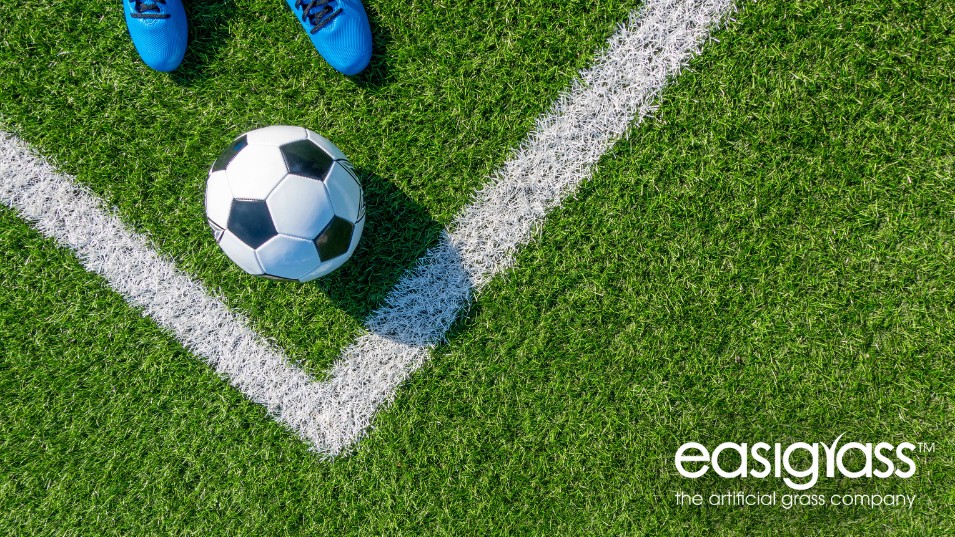
01 Aug Answering Your Commonly Asked Sports Turf Questions
So, you want a durable sports surface that looks and feels like real grass? Artificial sports turf has quickly become a popular choice for multi-purpose sports stadiums and training facilities, and it’s not difficult to understand why. Sports turf provides a cost-effective, durable, low-maintenance option, making it a sure winner. Whether aiming to enhance your sports field’s functionality or reduce long-term maintenance costs, artificial sports turf delivers a professional-grade solution that meets the demands of modern sports environments.
However, when making the switch, you may have some questions. Here are a few Sports Turf FAQs:
What is Sports Turf?
Artificial grass was initially designed for sports grounds and was first installed in the newly-built Astrodome Stadium in 1966. Since then, sports turf has come a long way, morphing into a hardy, convenient surface that looks and feels great. Its design mimics the look and feel of natural grass while providing a surface that can withstand heavy foot traffic and rough play. Whether for soccer, rugby, tennis or hockey, sports turf provides an excellent surface for various sports.
What are the Benefits?
The perfect sports surface should promote optimal performance and safety. Artificial turf offers a range of benefits that make it the ideal surface for sports fields:
Consistent Play: Whether it’s raining or the sun is out, athletes are always on the field. Therefore, they need a surface that’s great for all weather conditions. Artificial turf provides a consistently level and smooth playing surface and remains playable in most weather conditions. Thanks to its excellent drainage, athletes won’t be running through puddles and mud.
Low-Maintenance: Artificial turf is a low-maintenance alternative to natural grass and requires no mowing, watering, pest control or fertilising. While there is a significant investment when installing artificial turf, this is offset by the long-term savings you’ll enjoy from its low-maintenance features, including a reduction in maintenance labour and costs.
Versatility: Artificial turf is designed to accommodate a range of applications, including various sports. This makes it ideal for multi-purpose sports stadiums or sports facilities. However, a significant benefit is that it can be installed in a variety of environments, including rooftops, urban spaces, indoors, or outdoors.
Safety: Many athletes believe an ineffective playing surface contributes to non-contact injuries. Sports turfs provide a consistent playing field, ensuring there is less risk of injury. Thanks to non-slip technology, turf offers a surface with reliable traction and stability, reducing the risk of slips and falls. Installations also have the option to include shock-absorbing padding or relevant infill materials.
How do you maintain sports turf?
Your sports turf won’t require regular maintenance, but there are certain maintenance tasks you’ll need to add to your to-do list to ensure your turf remains in good condition. Maintenance is also the key to ensuring the longevity and performance of your artificial sports turf. Keep it green and vibrant by incorporating a regular grooming maintenance routine. You can use specialised groomers and brushes to evenly redistribute the infill across the field. This helps with matting and compaction, which keeps your surface looking great and ensures optimal performance.
Artificial turf is designed to be a durable surface, but consistent gameplay can be gruelling. Routine inspections will need to be conducted to check the seams and edges for signs of damage, wear or lifting. Thankfully, the Easigrass™ team can help check for damage.
How long does sports turf last?
Artificial turf is designed to be durable and long-lasting, but this depends on the quality of your turf. Several factors contribute to the lifespan of your turf, such as intensity of use, maintenance, and which turf product you select. High-quality artificial sports turf has an average lifespan of around eight to 10 years but can be even longer with proper maintenance. Regular maintenance is pivotal to extending the lifespan of your sports turf, so it’s important to regularly check for damage, maintain infill levels, and prevent compaction.
What sports can be played on artificial turf?
This is where turf’s versatility comes into play. This high-performance surface can benefit a range of sports, including soccer, tennis, field hockey, golf, rugby, athletics, and so much more. High-quality artificial turf is engineered to provide good traction, ball roll, and shock absorption. Because certain sports need a surface that can handle their physical demands, turf makes a great option as it offers a surface that’s both resilient and consistent.
Can I customise my sports turf?
From adding shock pads and field markings to requiring a specific infill, the Easigrass™ team works with you to deliver a multi-purpose sports field that suits your needs and budget. This allows you to tailor your sports turf to meet specific functions, aesthetics, and branding needs.
Have more questions for us?
Artificial sports turf has several advantages over natural grass, including its resilience, safety and low-maintenance features. Easigrass™ has spent decades perfecting its artificial sports turf technology to ensure you experience unparalleled performance, durability, and safety on every field.
If you have any more questions or are ready to install sports turf, speak to us today!
